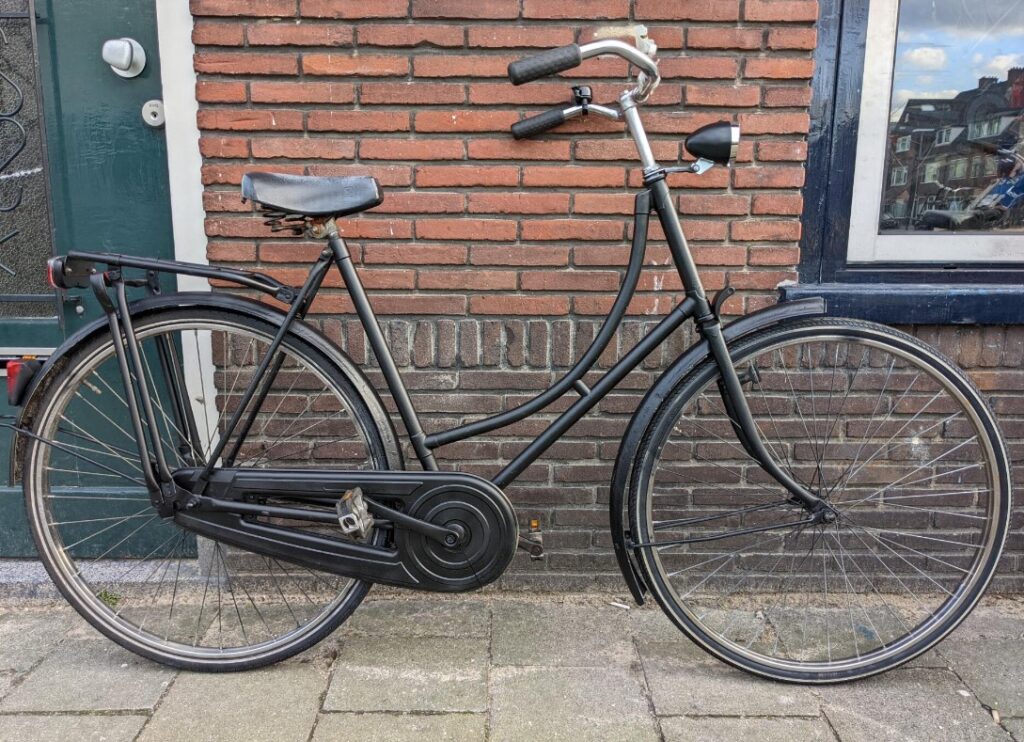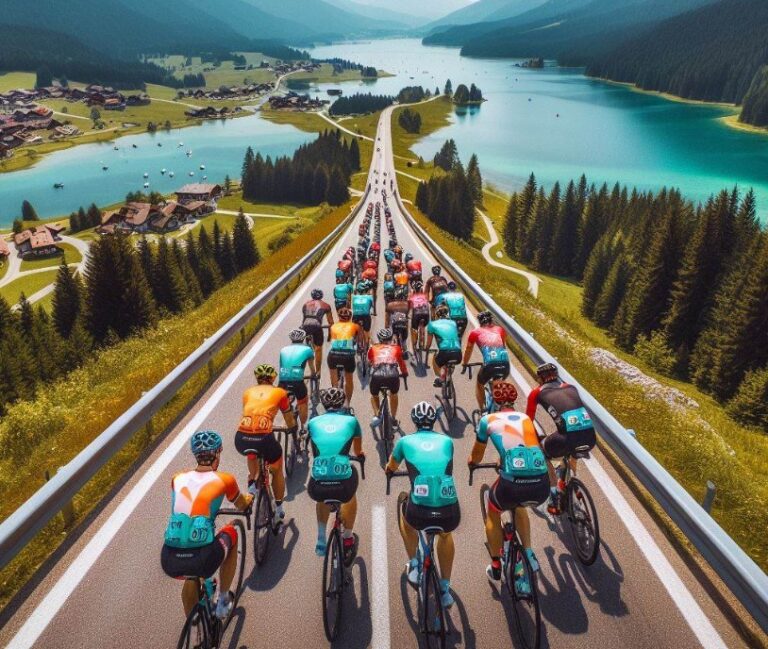Are Dutch Bikes Good On Hills? Quick Answer
Are you looking for Are Dutch Bikes Good On Hills? Exploring the compatibility of Dutch bikes with hilly terrains reveals a blend of design elegance and practical challenges. Dutch bikes, celebrated for their comfort and style, navigate urban landscapes with ease. Yet, their performance on inclines prompts a nuanced examination. This inquiry delves into their hill-climbing abilities, considering factors like gear systems and ergonomic design.
Key Takeaways
- Dutch bikes are best suited for flat terrains due to their design and weight.
- Models with gears can tackle moderate hills but may struggle on steep inclines.
- Rider comfort and the bike’s durability are unparalleled on flat routes.
Are Dutch Bikes Good On Hills?
In essence, Dutch bikes are not ideally suited for steep or challenging hills due to their heavier frames and typically single-speed design. However, models equipped with gear systems can manage moderate inclines more effectively.

Comfort and Design
Dutch bikes are lauded for their upright riding position, offering a comfortable experience for the cyclist. This design minimizes strain on the back and shoulders, making it ideal for leisurely rides and daily commutes on relatively flat terrain. The heavy frame, which contributes to the bike’s stability, also plays a role in its performance on hills.
Ergonomics on Inclines
On inclines, the comfort-focused design of Dutch bikes presents a challenge. The upright position, while reducing strain in flat conditions, may not offer the most efficient posture for pedaling uphill. Cyclists might find it harder to exert force when facing a steep climb.
Weight and Performance
The robust build of Dutch bikes, which adds to their durability, also means they are heavier than many road or mountain bikes. This weight can be a significant hindrance when ascending hills, requiring more effort from the rider to push forward.
Gear Systems and Hill Performance
While traditional Dutch bikes are often equipped with a single speed, modern variations include models with multiple gears. This adaptation is crucial for improving their hill-climbing capabilities.
Advantages of Multi-Gear Models
Bikes with multiple gears allow riders to adjust their pedaling effort according to the incline, making it easier to tackle varying gradients. A well-chosen gear can reduce the strain on the cyclist, making moderate hills manageable.
Limitations on Steep Inclines
Despite the advantages offered by gears, Dutch bikes with this feature may still struggle on steep hills. The bike’s inherent design and weight limit its efficiency compared to dedicated climbing bikes.
Terrain Suitability
Dutch bikes shine in urban environments with flat or gentle inclines. Their design prioritizes the comfort and ease of the rider, making them excellent for city commuting and leisurely rides.
Ideal Conditions for Dutch Bikes
Flat urban landscapes are where Dutch bikes excel. The combination of comfort, ease of use, and style makes them a favorite among city dwellers who prioritize these factors over speed or hill performance.
Challenges in Hilly Areas
In cities or regions with significant hills, riders might find Dutch bikes less practical. The effort required to climb steep inclines can diminish the riding experience and efficiency.
What Kind of Bike is Best for Uphill Riding?
When it comes to uphill riding, the best bikes are typically those that combine lightweight frames with multiple gears to accommodate different inclines. Road bikes, mountain bikes, and hybrid bikes are often preferred for their hill-climbing capabilities.
Road bikes are lightweight and designed for speed, featuring narrow tires and a range of gears that make them efficient for climbing steep roads. Mountain bikes, with their sturdy frames, wide tires, and extensive gearing, are built to handle off-road trails and steep inclines.

Hybrid bikes combine elements of both road and mountain bikes, offering a versatile option with a comfortable riding position and gears suited for various terrains.
The choice among these depends on the specific conditions of the uphill terrain, such as the steepness of the hills and whether the surface is paved or off-road.
What Is Special About Dutch Bikes?
Dutch bikes stand out for their emphasis on comfort, durability, and low maintenance. Characterized by an upright riding position, these bikes are designed for relaxed, everyday use in urban environments.
The upright position offers a comfortable ride, allowing the cyclist to enjoy better visibility and maintain a natural posture, reducing strain on the back, neck, and shoulders.
Dutch bikes often come equipped with practical features such as fenders, chain guards, integrated lights, and sometimes even a built-in lock, making them highly functional for daily commutes and errands.
Their sturdy frames and enclosed drivetrains are designed to withstand the rigors of city cycling with minimal maintenance. The special combination of comfort, practicality, and style makes Dutch bikes a beloved choice among urban cyclists.
Are Dutch Bikes Better for Your Back?
Yes, Dutch bikes can be better for your back due to their ergonomic design. The upright seating position on a Dutch bike aligns the spine more naturally than the forward-leaning posture required by road or mountain bikes.

This reduces the risk of strain or discomfort in the lower back, shoulders, and neck during rides. Additionally, many Dutch bikes feature wide, cushioned seats and handlebars that encourage an upright posture, further enhancing back support.
This design is particularly beneficial for riders who experience back pain or wish to avoid it, making Dutch bikes an excellent choice for comfortable, pain-free cycling in urban settings.
Why Dutch Bikes Are Better?
Dutch bikes are considered better for several reasons, particularly when it comes to urban commuting and leisurely rides. Their design prioritizes comfort, with an upright riding position that supports a natural posture, reducing strain on the rider’s back, neck, and shoulders.
The inclusion of practical features like fenders, chain guards, and integrated lighting systems enhances their functionality for daily use, making them an all-weather, all-purpose mode of transportation.
Dutch bikes are also known for their durability and low maintenance, with enclosed drivetrains and robust construction that require less frequent servicing.
Furthermore, their classic design and aesthetic appeal make them a stylish choice for city cyclists. For riders prioritizing comfort, convenience, and style over speed and performance on varied terrains, Dutch bikes offer an unmatched cycling experience.
Conclusion
Dutch bikes offer unparalleled comfort and style for flat urban commutes but face limitations on hilly terrains. While gear-equipped models improve their adaptability, steep inclines remain a challenge.
Riders seeking versatility on varied terrains might consider alternative bicycles designed specifically for hill climbing. Nonetheless, for city cycling and moderate inclines, Dutch bikes with gears present a viable option, merging traditional elegance with a degree of hill compatibility.
Top FAQ’s
Are there any alternatives to Dutch bikes for hilly areas?
For those living in hilly areas, hybrid bikes, road bikes, or mountain bikes might be more suitable alternatives. These bikes are generally lighter and designed with gears optimized for varying terrains, including steep inclines. Their frames and seating positions are also designed to enhance pedaling efficiency on hills.
How does rider fitness level affect hill climbing on a Dutch bike?
A rider’s fitness level significantly affects their ability to climb hills on a Dutch bike. Individuals with higher stamina and leg strength will find it easier to pedal uphill, even with the bike’s heavier frame and less aerodynamic position.
What are the best techniques for riding a Dutch bike on hills?
When riding a Dutch bike on hills, it’s important to use any gears efficiently by shifting down before the incline becomes too steep. Maintaining a steady, rhythmic pedaling cadence can also help. For steep hills, leaning slightly forward can improve balance and pedaling efficiency.
Can electric Dutch bikes handle hills better?
Electric Dutch bikes, equipped with pedal-assist technology, can handle hills much better than their traditional counterparts. The electric motor provides additional power during pedaling, making it easier to climb steep inclines without exerting as much physical effort.

Welcome to the exhilarating world of Matt Rex, a professional car racer turned renowned vehicle enthusiast. Immerse yourself in his captivating blog as he shares heart-pounding adventures, expert reviews, and valuable insights on cars, trucks, jets, and more. Fuel your passion for speed and discover the beauty of vehicles through Matt’s engaging stories and meticulous expertise. Join the ever-growing community of enthusiasts who find inspiration and expert advice in Matt Rex’s blog—a digital hub where the thrill of speed meets the pursuit of knowledge.




![Can You Powder Coat Motorcycle Exhaust? [Answered]](https://www.turbochaos.com/wp-content/uploads/2024/02/Can-You-Powder-Coat-Motorcycle-Exhaust-768x689.jpg)


